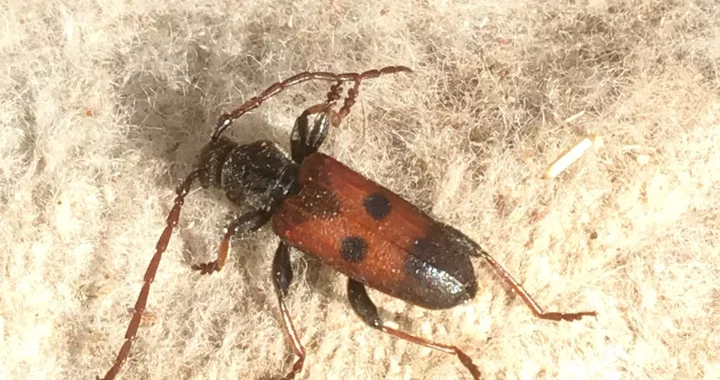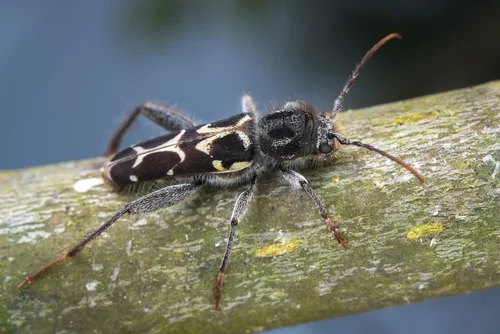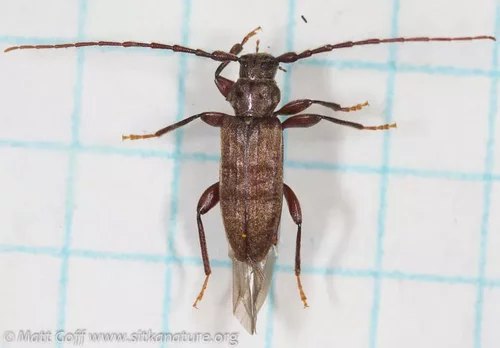Subfamily
Cerambycinae (Typical longhorn beetles)
Semanotus amplus. Photo: (c) nancyb, some rights reserved (CC BY-NC)
Cerambycinae is a subfamily of the longhorn beetle family (Cerambycidae). The subfamily includes over 715 genera, which, in total, consist of some 3,900 species. The subfamily is most widely distributed in the Americas, with 430 species in 130 genera in its neotropical regions. Within the family, the only subfamily of comparable diversity is the Lamiinae.
-
Humboldt Life
-
Kingdom: Animalia (Animals)
-
Phylum: Arthropoda (Arthropods)
-
Subphylum: Hexapoda (Hexapods)
-
Class: Insecta (Insects)
-
Subclass: Pterygota (Winged and once-winged insects)
-
Order: Coleoptera (Beetles)
-
Suborder: Polyphaga (Water, rove, scarab, long-horned, leaf, and snout beetles)
-
Infraorder: Cucujiformia (Cucujiform beetles)
-
Superfamily: Cerambycoidea (Long-horned beetles and allies)
-
Family: Cerambycidae (Longhorn beetles)
-
Subfamily: Cerambycinae (Typical longhorn beetles)
- Tribe: Callidiini (4)
- Tribe: Clytini (5)
- Tribe: Compsocerini (1)
- Tribe: Opsimini (1)
-
Subfamily: Cerambycinae (Typical longhorn beetles)
-
Family: Cerambycidae (Longhorn beetles)
-
Superfamily: Cerambycoidea (Long-horned beetles and allies)
-
Infraorder: Cucujiformia (Cucujiform beetles)
-
Suborder: Polyphaga (Water, rove, scarab, long-horned, leaf, and snout beetles)
-
Order: Coleoptera (Beetles)
-
Subclass: Pterygota (Winged and once-winged insects)
-
Class: Insecta (Insects)
-
Subphylum: Hexapoda (Hexapods)
-
Phylum: Arthropoda (Arthropods)
-
Kingdom: Animalia (Animals)






CLICK TO MANAGE